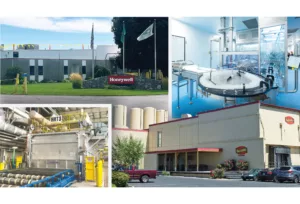Lifting Spokane's labor participation requires in-depth analysis
Worker supply said to be pressing economic issue

In a Journal column earlier this year, I touched on what appears to be most pressing issue for the Spokane and regional economy: the supply of workers.
Expanding the workforce depends on population gains and the size of the labor force participation rate. Recently, the region has experienced strong population growth. But the same can’t be said of the participation rate.
The rate is a convenient measure of assessing overall workforce supply. It is defined as the number of people working or unemployed but seeking employment as a percentage of the population 16 years and older. Since the turn of the century, the rate has been declining nationally and statewide. Spokane County’s decline has been even more pronounced.
In the prior column, I identified subpopulations with potential to interact with the workforce to stem the decline. These include aging baby boomers, women, the disabled, and immigrants.
In this column, let’s ask: What if each of these subpopulations slightly increased their presence in the workforce? How much would it take, in total, to bridge the gap between the local demand and the supply of workers?
First, let’s set a modestly ambitious goal: Arrest the decline in Spokane’s participation rate and return it to 60%. That percentage, by the way, is the national forecast for 2030 by the U.S. Bureau of Labor Statistics.
As the Spokane Trends indicator tracking the participation rate makes clear, if the recent path continues, Spokane’s rate in 2030 will be little more than 57%. Assume that the “medium” forecast recently released for Spokane by the Washington state Office of Financial Management is generally correct. If the local participation rate were to attain 60%, that implies an additional 12,000 people joining the labor force.
How might changes in the trajectories of these subpopulations get us there?
To start, let’s consider the older adult population. Eastern Washington University’s Institute for Public Policy and Economics calculations of the labor market participation rate by the Spokane County’s 65-plus population show the rate to be 15%—below the state rate of 17%. As more baby boomers hit this age threshold, BLS projects that a higher percentage will stay in the workforce than now, for a variety of reasons. It seems reasonable to set a goal of an 18% participation rate. If that were to occur and OFM’s age-based forecast for 2030 is largely correct, an increase of about 3,800 older adults into the county workforce would follow.
Attracting a greater number of women into the workforce provides another avenue. Surging numbers of female entrants into the workforce dramatically drove up the overall participation rate in the 1980s and 1990s. Male participation rates during those decades fell slightly. Institute calculations show Spokane’s female participation rate for the most recent four quarters was at 56%, slightly higher than state female rate.
The BLS is forecasting a national female participation rate of 56% by the end of the decade. Imagine if Spokane could modestly outperform and achieve a rate of 58%. Based on OFM’s forecast, a bump up by this small percentage would yield an additional 5,900 participants in the workforce.
A third opportunity stems from Spokane’s disabled population. While some aren’t able to hold a job, many likely are. BLS pegs the national participation of the disabled in the 18-64 age group currently at 38%. We have no estimate of the participation rate for Spokane’s disabled population, but it is likely not too different.
What is different from the U.S. profile is the number of disabled here. According to a 2021 Census estimate, one in seven residents in the county claims a disability. This stands in contrast to the national rate of one in nine residents.
Imagine then, a modest increase, say 3%, of the presence of the disabled in the Spokane workforce. If the current proportion of the disabled in Spokane’s population hold in 2030, there will be about 50,000 disabled in the age group 15-64. Three percent of this number delivers an additional 1,500.
Immigrants have traditionally played a huge role in expanding our country’s labor force. Most come to the U.S. to find a better material life. In other words, most come to work, and that attitude shows up in their participation rates. The most recent estimate of the national rate for immigrant men by BLS was 75%, versus 65% overall. Participation rates for immigrant women are considerably lower, at 53%, and slightly below the overall female national average.
The rub facing Spokane is there are relatively few immigrants here. As Spokane Trends makes clear, the total estimate of the foreign born in 2021 in the county amounted to 5%; nationally, the share was closer to 14%. The willingness of Spokane immigrants to work is likely no different than those in the rest of the country. The real challenge is to find more immigrants.
Imagine that 20% of the county’s population gain between now and 2030 projected by OFM is attributed to immigrants. That is, somehow Spokane becomes more attractive to the foreign born. Assuming current national participation rates, the local labor market picks up nearly 4,000 workers.
A final subpopulation not covered in the earlier Journal column concerns teenage employment. Institute calculations point to current local and state participation rates at about 14%. While the BLS is predicting a decline among teenagers in the workforce, let’s imagine that Spokane bucks the trend, say by 3 percentage points. If OFM’s age-based population forecast is accurate, this delivers nearly an additional 1,500 to the local workforce by 2030.
After an accounting for redundancies in projected gains of each category due to an assumed equal share of females, these scenarios sum to a number that nearly meets the initial goal—a boost in the workforce by 12,000 by 2030. Spokane would then receive an average grade for the willingness of residents to engage in paid employment.
The scenarios don’t spell out how to increase engagement by these subpopulations. But there are roads others have traveled that offer insights, and I hope to take them up in future columns.
Related Articles

_c.webp?t=1763626051)
_web.webp?t=1764835652)

